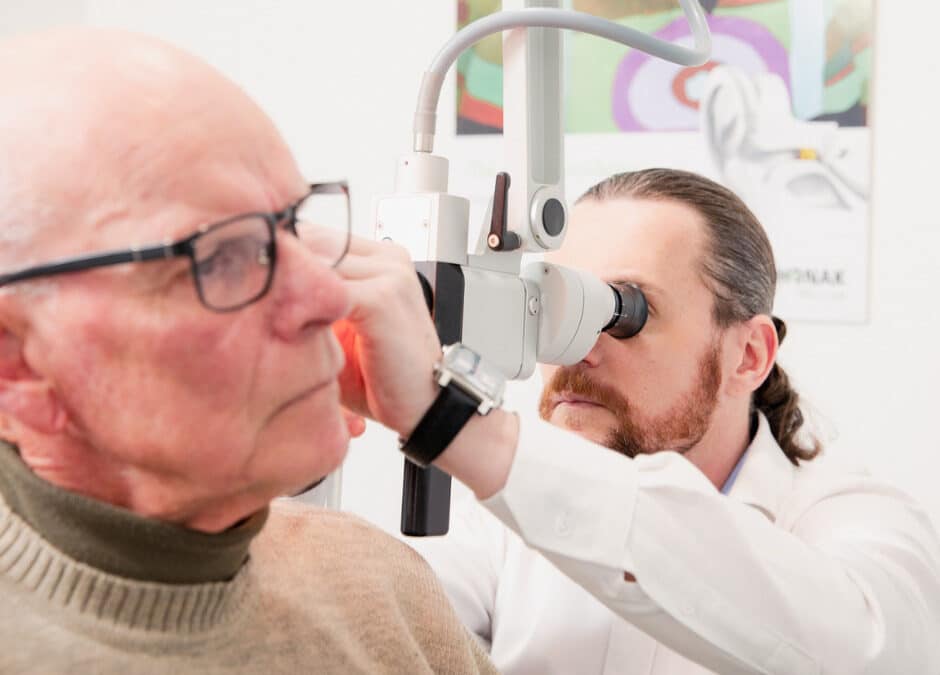Ear wax, also known as Cerumen, is a combination of sebum – a light-yellow oily substance secreted by glands to keep skin moisturised, dead skin cells, dust, and debris. It is the mixture of all these things which gives ear wax the yellowish-brownish appearance in colour and can make some a little squeamish! Contrary to the belief wax is the sign of poor hygiene, wax is the sign of a healthy ear with self-cleansing abilities.
Why do we create ear wax?
Ear wax has 3 key protective factors:
1. Antibacterial/antifungal properties to reduce the risk of ear infections
2. To provide a protective lubricant layer over the delicate ear canal
3. The natural cleanser of the ear
The ear canal is lined with clever Epithelial cells. These epithelial cells are unique in their ability to slowly shuffle wax and other dirt/debris that may have gathered along with it. Our jaw movements further help this phenomenon. Over cleaning of the ears with cotton buds, can disrupt this natural migration of ear wax.
Whilst wax is not designed to be routinely removed from the ear, there are certain circumstances which warrant safe removal by a trained audiologist, local GP and/or an Ear Nose Throat (ENT) specialist.
When is it appropriate or necessary to have ear wax removed?
If it is causing hearing loss
wax build up that takes up all the space in our ear canal, makes it hard for sounds to move through and be heard. Whilst the wax cannot cause permanent hearing loss or damage to the ear, it can feel disorientating and uncomfortable.
If is causing pain
compacted wax, can push against the sensitive structures of the ear canal and ear drum
Incorrect cotton-bud use
Cotton buds are not designed for wax removal. Due to their blunt end, wax can be pushed further into the ear canal and disrupt the natural migration out of the ear and become compacted and stuck in ear. In more serious cases, cotton buds can cause perforations to the ear drum. Instead, use cotton buds to gently clean the outer structures of the ear, and shallow in the ear canal using a rotating rather than poking motion.
Narrow ear canals and/or poor ear canal anatomy
Narrow ears can make it more difficult for wax to naturally move out of the ear. The ear canal is not a straight path; there are dips, bumps, narrowing and widening of the space towards the ear drum. People with narrow ear canals are more prone to wax occlusion. Some also suffer from ear canal conditions such as Surfer’s ear, also known as exostoses. This is when the bone of the ear canal slowly grows and narrows the ear canal. In this circumstance, given the narrow nature of the ear canal, it does not take much wax to block off the ear completely.
How is ear wax removal done?
At Victorian Hearing all our audiologists are professionally trained in three methods of safe wax removal.
- Micro suction
A microscope is used to visualise the ear canal in high resolution. The audiologist then uses a very fine tube/vacuum to gently suction the wax from the ear. The process is painless and safe as there is not contact with the skin or ear drum. - Curette
A microscope is used to visualise the ear canal and a small loop is hooked behind the wax to gently remove the plug. - Indirect syringing (irrigation)
The rounded nozzle with 3 water outlets is aimed towards the wax in an effort to help flush the debris out of the ear
The method of wax removed is dependent on the texture of the wax, ear canal shape and size, history of ear surgery, how much wax and how deep the wax is sitting in the ear canal.
Don’t know if your ears are blocked or need a clean? Best way to find out is have a professional, such as a Victorian Hearing audiologist, have a look and assess the health of your ear canal. Make an appointment for a ear health check and ear wax removal near me today.

